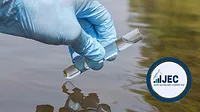News
Congressional Water Project Earmarks Face Questions and Concerns
Do water project earmarks divert EPA funds? What oversight would be imposed on state-administered funds?

A report by the federal research agency used by Congress raises concerns among members of Congress that federal budget earmarks that fund water projects within a state or congressional district are diverting funds administered by the Environmental Protection Agency (EPA) to support those projects.
Congress has assisted communities by financing certain wastewater and drinking water infrastructure improvements needed to comply with federal regulations and maintain levels of service, says the report “Wastewater and Drinking Water: Committee Deadlines for EPA’s Administration of ‘Earmarks’” produced by the Congressional Research Service (CRS). Through statute, appropriations, and report language, Congress has provided the EPA with authority, funding, and direction to support state and local entities in making investments to comply with regulations and furthering public health protection, says the CRS report.
To further that effort, Congress authorized two primary programs at EPA to support water infrastructure: the Clean Water State Revolving Fund (CWSRF), approved by the Clean Water Act (CWA), and the Drinking Water State Revolving Fund (DWSRF), all authorized by the Safe Drinking Water Act (SDWA).
In addition, the 117th Congress reestablished the practice of congressionally directed spending (CDS) for specific wastewater and drinking water infrastructure projects through community project funding (CPF) items, commonly called “earmarks,” the CRS report says.
However, according to Ben Hammond, who is Professional Staff on the Senate Appropriations Committee and provided insight into how earmarks are determined during a presentation on the federal budget process at the National Water Resources Association Policy Conference in Washington, D.C. on April 10, 2024, a limit of one percent of the money available to Congress for discretionary spending has been set for CDS and CPF projects.
The amount allocated for an earmark is developed by groups outside the federal government who will work with an individual member of the House or Senate, or both, to develop a funding request, Hammond said. When an amount is decided on, it will be vetted to ensure a project is worthy, and once a request is vetted, it is forwarded to the appropriate subcommittee, and each subcommittee differs on making allocations, he said. “They (subcommittees) have their own process for how they dole out that money,” he said, adding, “A top line amount of one percent of how much funding can be spent on earmarks in terms of discretionary money” has been set by the Appropriations Committee. “That sets a ceiling, and then usually the full committee will decide how they're going to distribute that 1 percent to the subcommittees,” he said.
With the process for allocating earmark funding established, including limits on the percentage of funds that can be used for earmarks, CDS and CPF grants for wastewater and drinking water infrastructure projects were included in the Consolidated Appropriations Act of 2024 (P.L. 118-42), which directs EPA to reserve 48 percent ($787.7 million) of the CWSRF appropriation and 56 percent ($631.7 million) of the DWSRF appropriation for CDS and CPS projects. The funds reserved for CDS and CPF are distributed directly to recipients instead of to states’ SRF programs, the report says.
However, CDS and CPF-directed funding reduces the amount available for state SRF capitalization grants, as well as for set-aside grants to tribes and territories, and that makes the total amount available for water infrastructure projects from the federal fiscal year (FY) 2024 appropriations act to remains the same, though the CDS and CPF amounts are distributed directly to recipients rather than through SRF programs, the report says.
In addition, the speed at which such funds are being distributed has raised concerns among some members of Congress who question why EPA has not provided FY2022 and FY2023 CDS and CPF funds to grant recipients promptly, according to the CRS report. Because of concerns about EPA timeliness in distributing CDS and CPF funds, members of Congress required the EPA to brief the House and Senate Committees on Appropriations on ways to improve the timeliness of CDS and CPF administration within 45 days of enactment of the Consolidated Appropriations Act of 2024, and for EPA to provide a full report to those committees on the matter within 90 days of enactment.
However, the requirement for EPA to conduct a briefing and produce a report for Congress raises several questions for policymakers, including that those requirements indicate the appropriations committees are interested in a proposal where states, rather than the EPA, administer earmarks and raises the question on the state’s capacity to distribute these funds, the report says.
Furthermore, the appropriations committees directed the EPA to include a proposed set-aside for states to use if they elect to administer CDS and CPF funding, which raises questions about the administrative set-aside funds, according to the report. Those questions include:
Would the set-aside funds be provided separately from the SRF appropriation or as set-aside from CDS and CPF funds?
Would states that elect to administer CDS and CPF funds have to comply with similar oversight requirements, such as annual or biennial reports, as is required under the SRF programs?
Read the CRS report “Wastewater and Drinking Water: Committee Deadlines for EPA’s Administration of ‘Earmarks’”
Looking for a reprint of this article?
From high-res PDFs to custom plaques, order your copy today!




